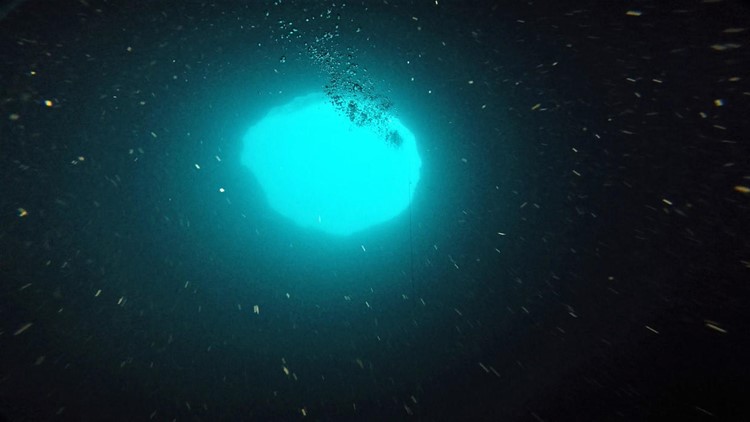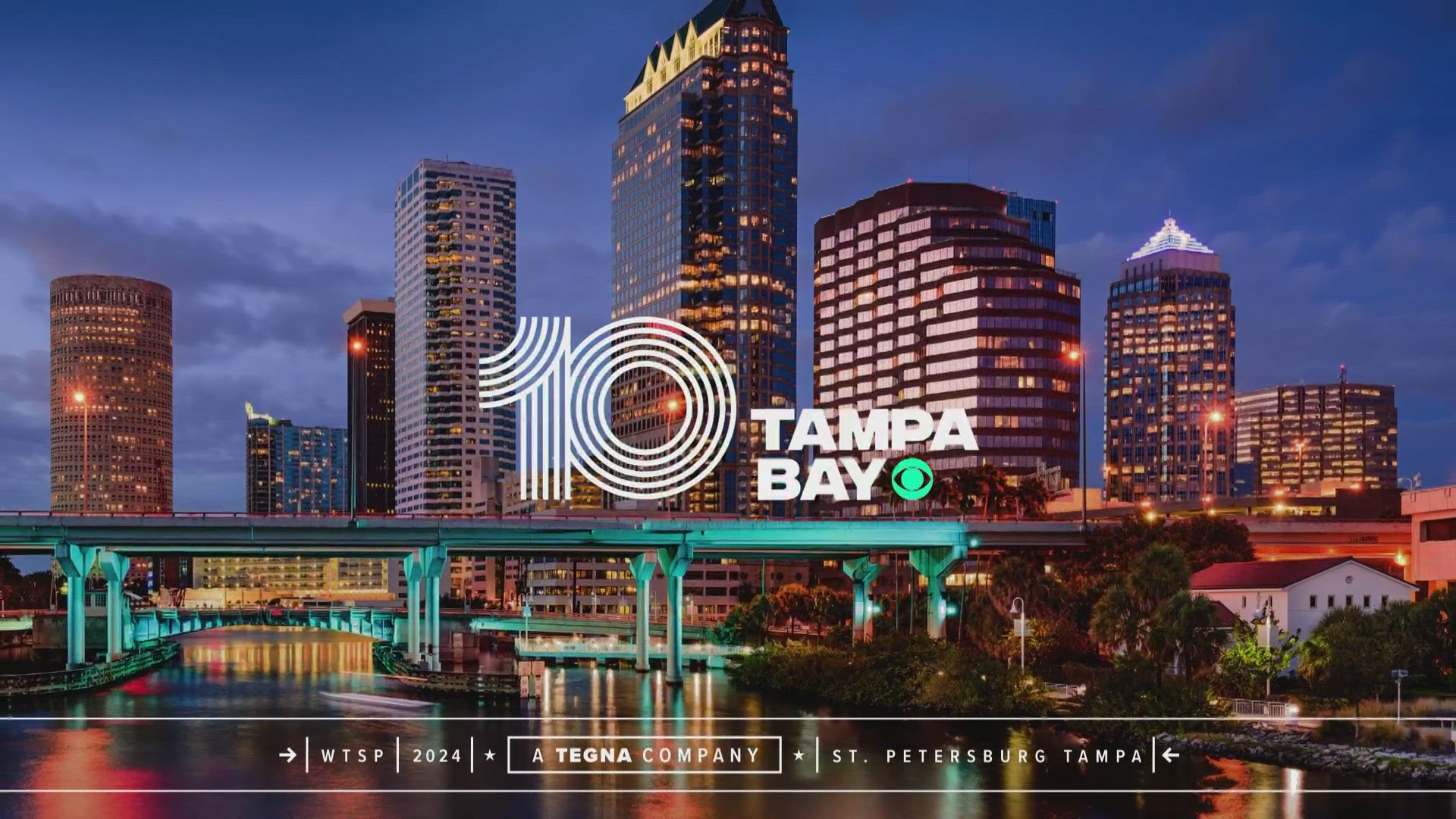ST. PETE BEACH, Fla. — Divers and fisherman in Florida's Gulf Coast recently discovered a 425-foot "blue hole" similar to sinkholes on nearby land. The hole has been dubbed the Green Banana. It's located about 155 feet below the water's surface, according to the National Oceanic and Atmospheric Administration (NOAA).
Next month, a group of researchers will begin searching the mysterious hole for signs of life. NOAA says there are many underwater sinkholes, springs and caverns scattered across Florida's Gulf continental shelf. It's not clear how many exist or where to find them, but most are believed to host booming populations of a wide variety of plants and animals.
Researchers with the Mote Marine Laboratory and Aquarium in Sarasota think the hole likely formed roughly 8,000 to 12,000 years ago, when the Florida coastline was about 100 miles further offshore. Fisherman and divers who frequent the waters say they've been curious about the holes for decades.
"It was more like word of mouth... these divers would go out and try to find it, and they had plenty of days where they didn't find anything and other days where, 'Eureka! There's a hole!'" Researcher Emily Hall, a staff scientist and program manager at Mote Marine Laboratory, told CBS News.
Fellow program manager at Mote and senior scientist Jay Cutler say he's discovered about 20 holes in the region since he first started looking during dives in the mid-1990s.
"You always want to go down a little bit more. Every square foot it's like, 'I wonder what's down deeper and deeper,'" Culter told CBS News. "It is exciting to get to go to someplace where you're pretty sure no one else has been."
Mote researchers were part of a team who explored a similar blue hole last year, a 350-foot deep hole known as Amberjack. The team, which included scientists with the Harbor Branch of Florida Atlantic University, the Georgia Institute of Technology and the U.S. Geological Society plan to return to the Gulf Coast in August and May 2021 to study Green Banana.
The 2019 mission was supported by the NOAA Office of Ocean Exploration and Research. It marked the most in-depth blue hole investigations ever conducted. After deploying divers and more than 600 pounds of equipment into Amberjack Hole, the team found carbon, nutrients and microscopic life lurking inside. Researchers even found two tooth sawfish -- an endangered species.
Along with looking for new species, researchers hope next month's Green Banana mission could explain how the holes impact the global carbon cycle. Scientists want to see if there's a link between those sinkholes and Florida's groundwater. The team says that could determine whether or not to make the holes protected areas.
What other people are reading right now:
- Body of missing 5-year-old found in Highlands County lake
- Yankees, Nationals players kneel with long, black ribbon before game
- Funeral expenses for 3 friends killed in Frostproof 'massacre' covered by donations
- Tropical Storm Hanna forms in the Gulf of Mexico
- Infectious disease experts believe schools will be the epicenter for the spread of COVID-19 this Fall
- Hillsborough County Schools reopening delayed by 2 weeks to Aug. 24
- Trump cancels Jacksonville segment of Republican National Convention
- Florida adds record 173 new deaths to its coronavirus report in a single day
- Here are the reopening plans for Tampa Bay school districts
FREE 10 TAMPA BAY APP:
►Stay In the Know! Sign up now for the Brightside Blend Newsletter





